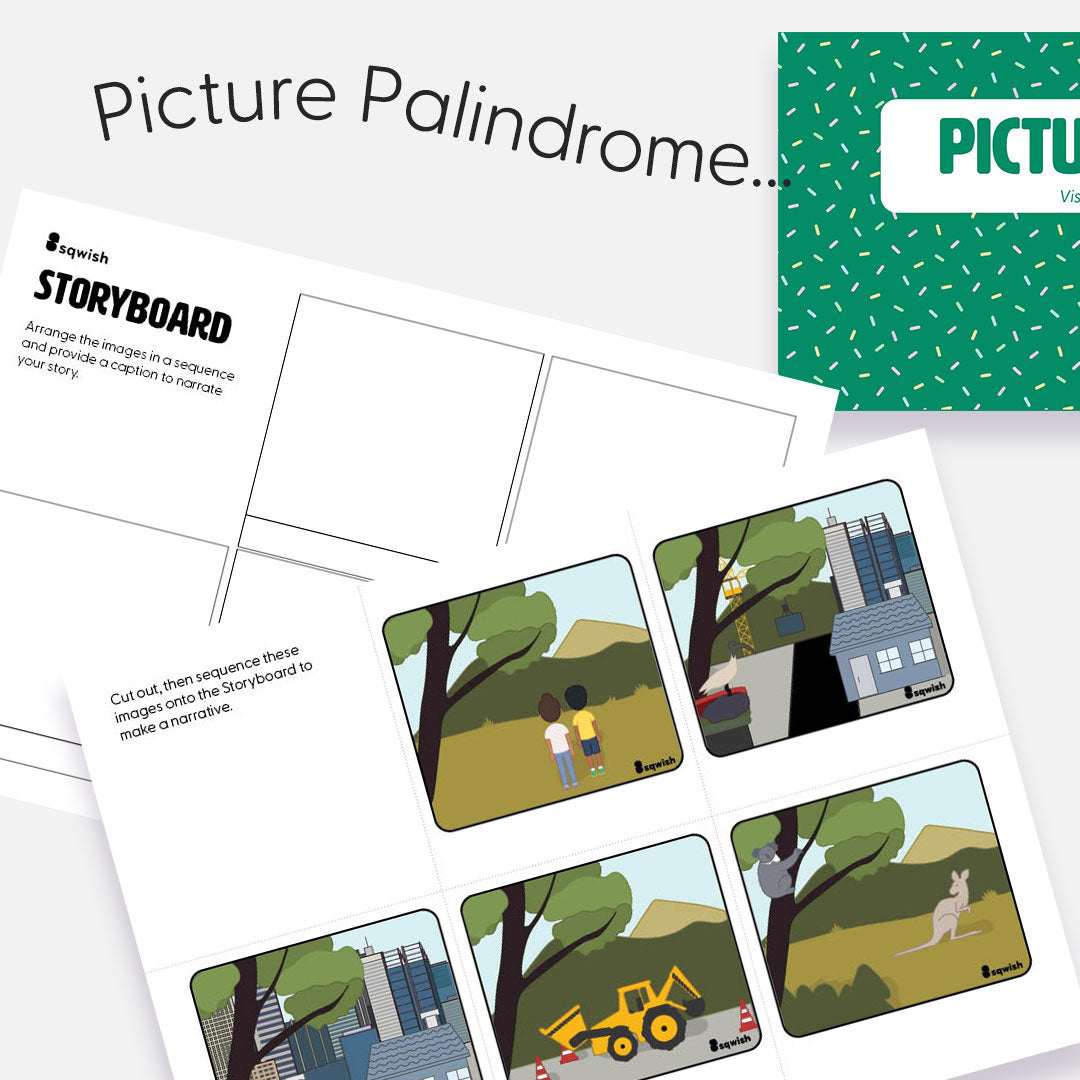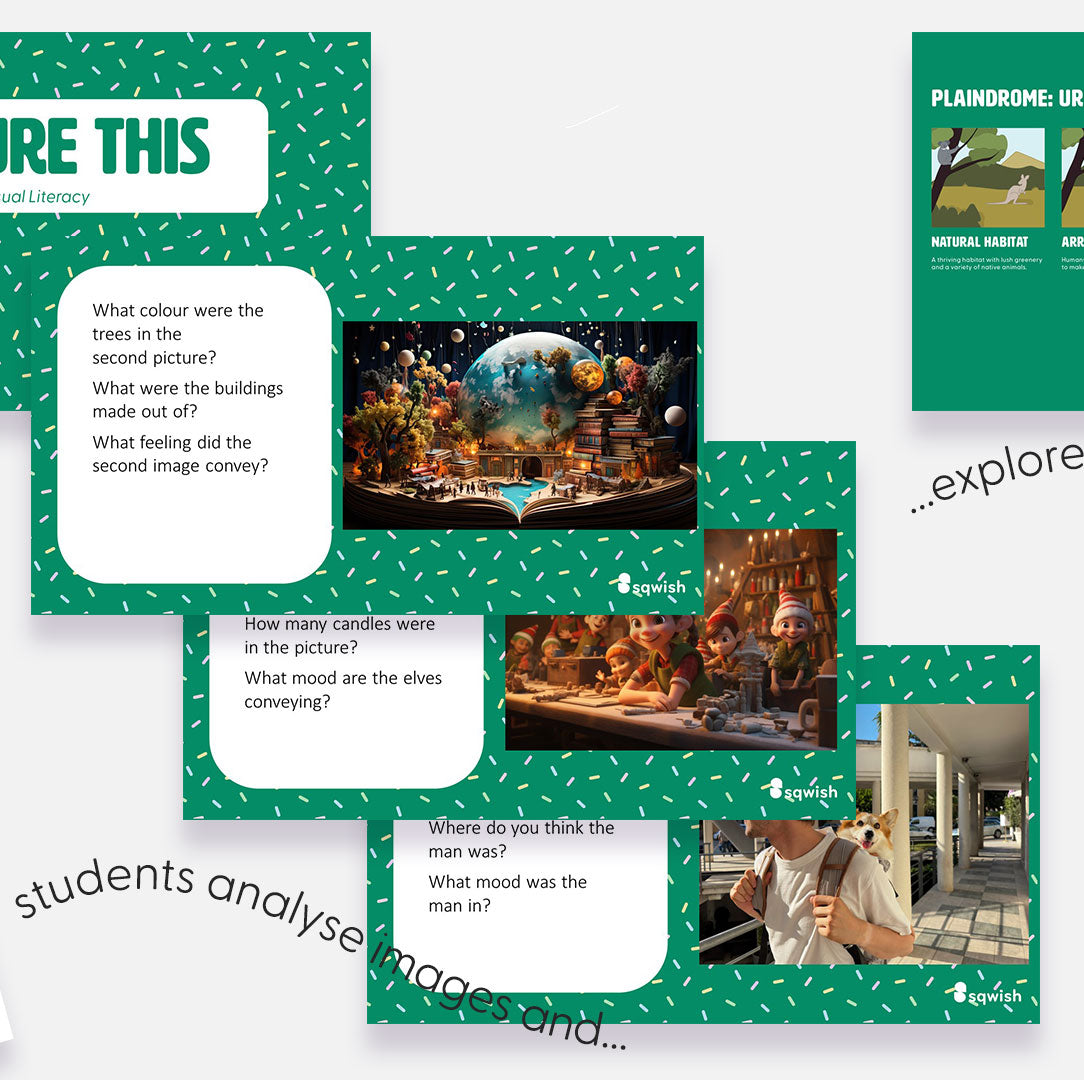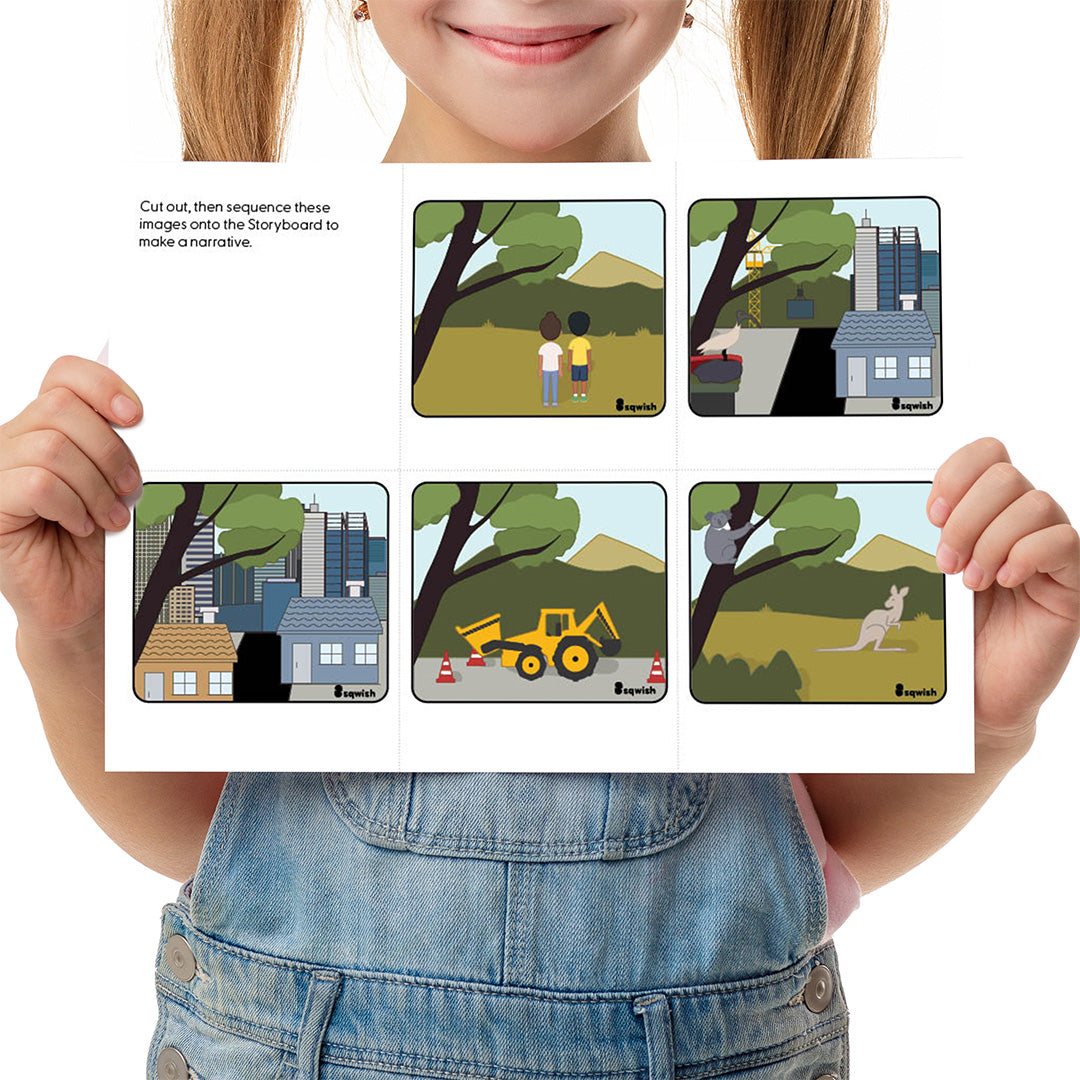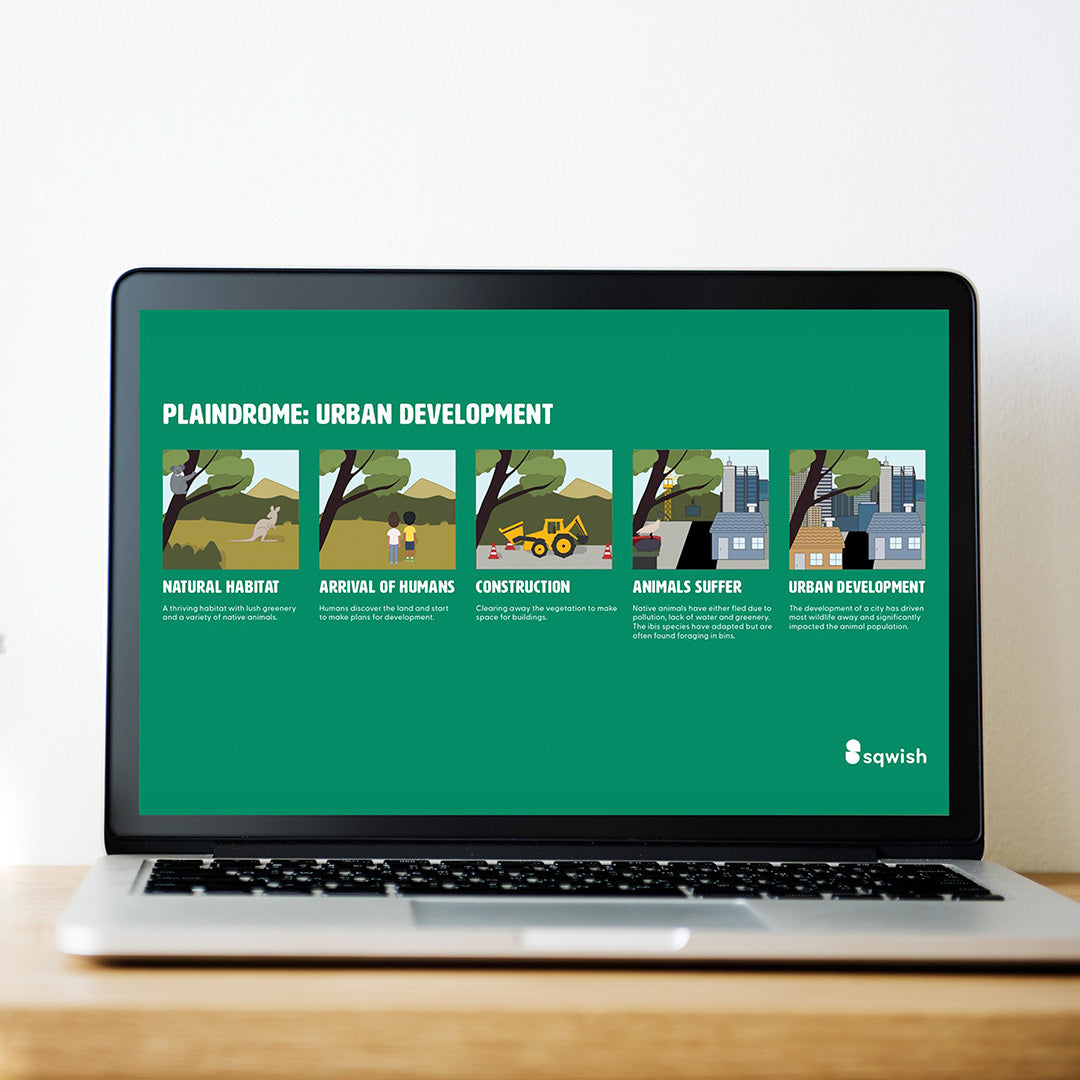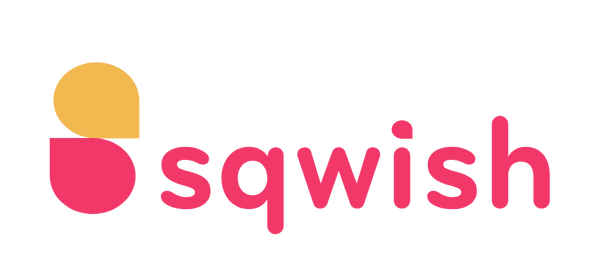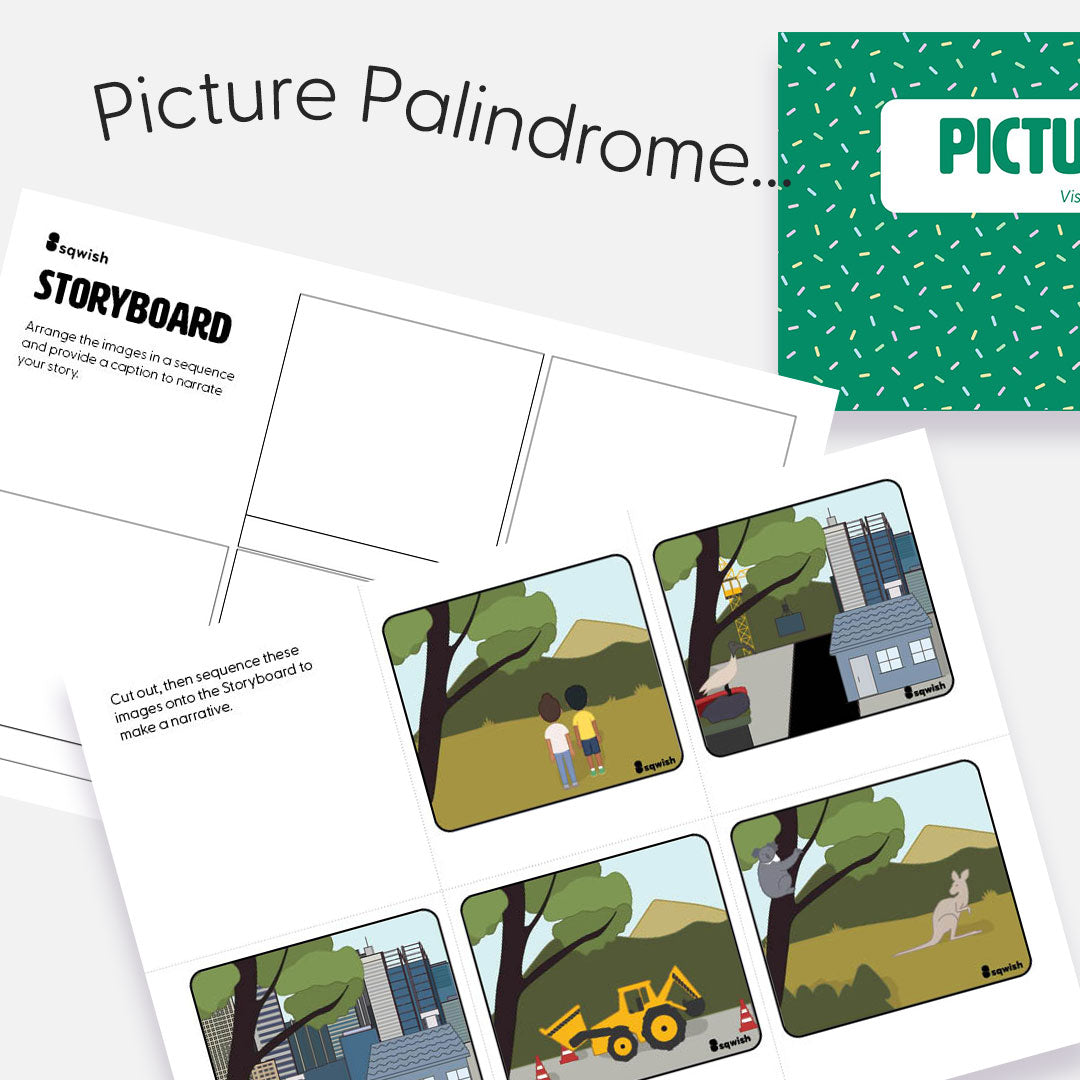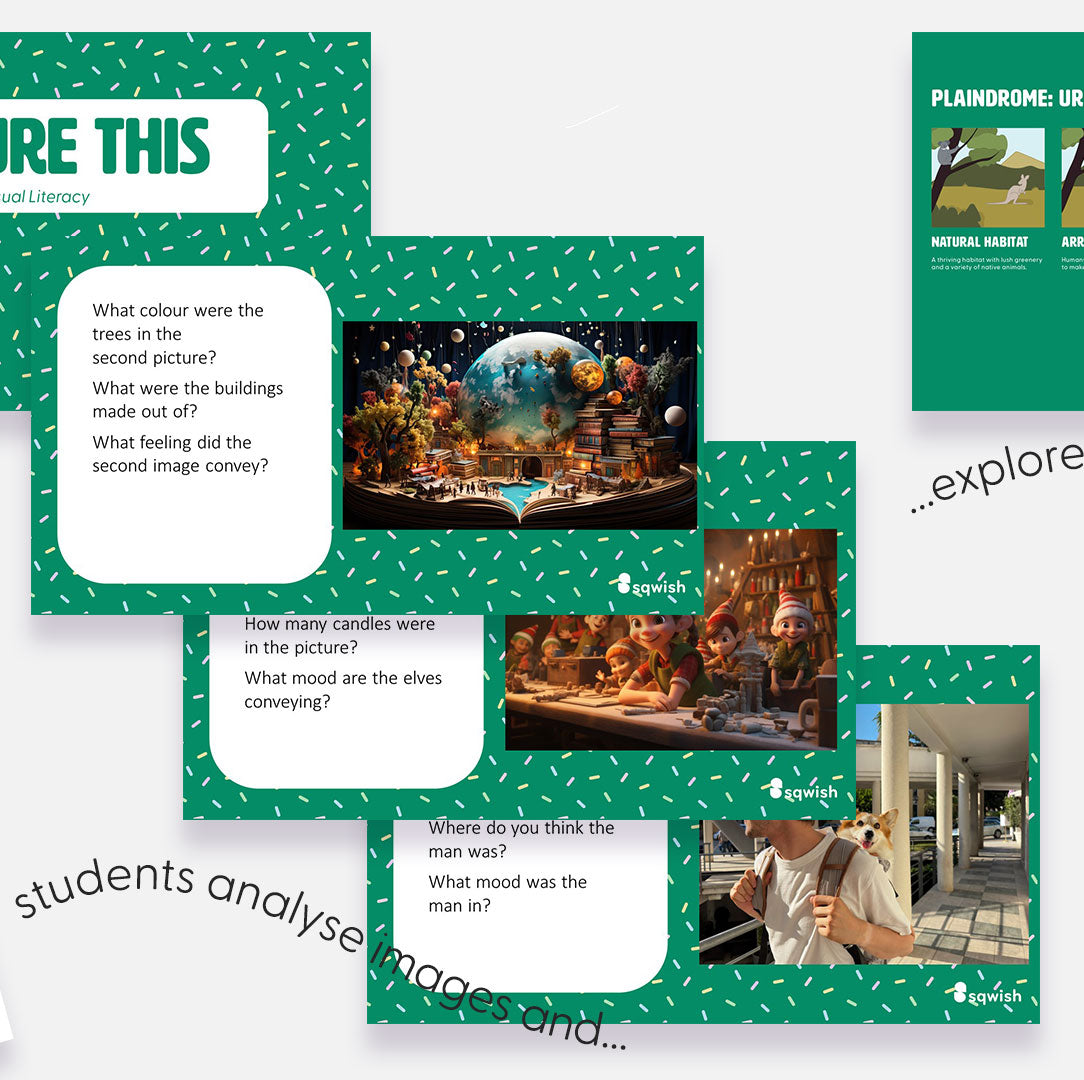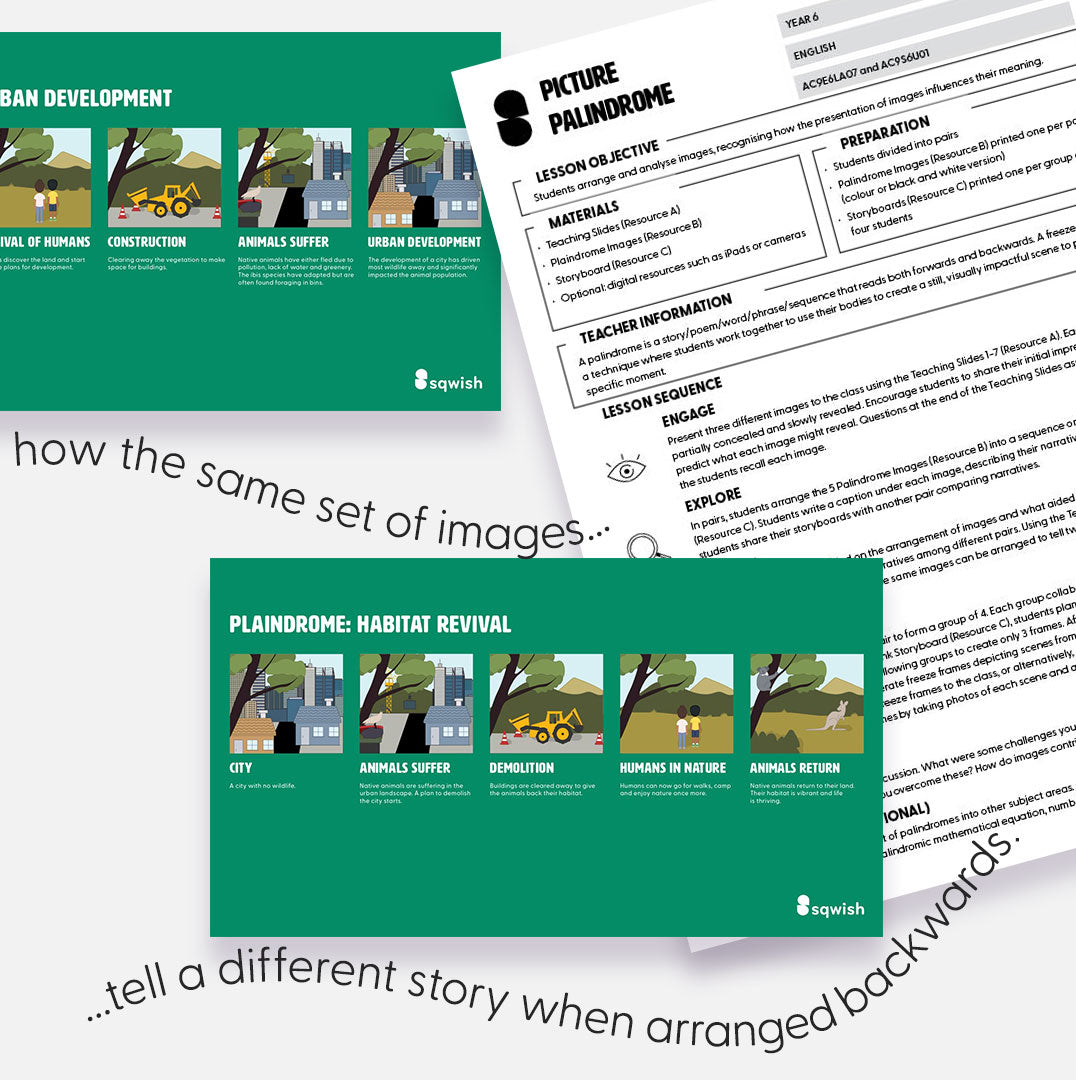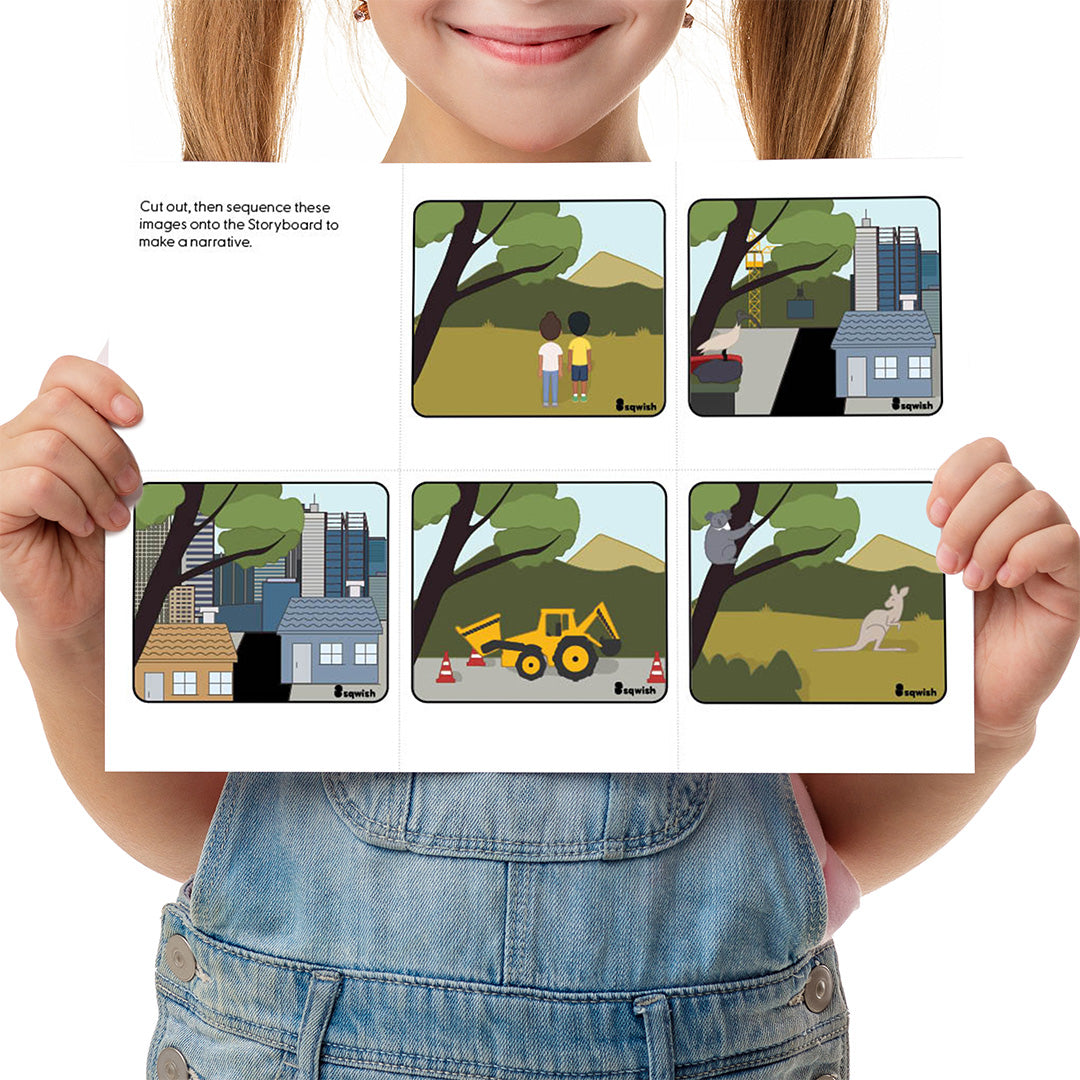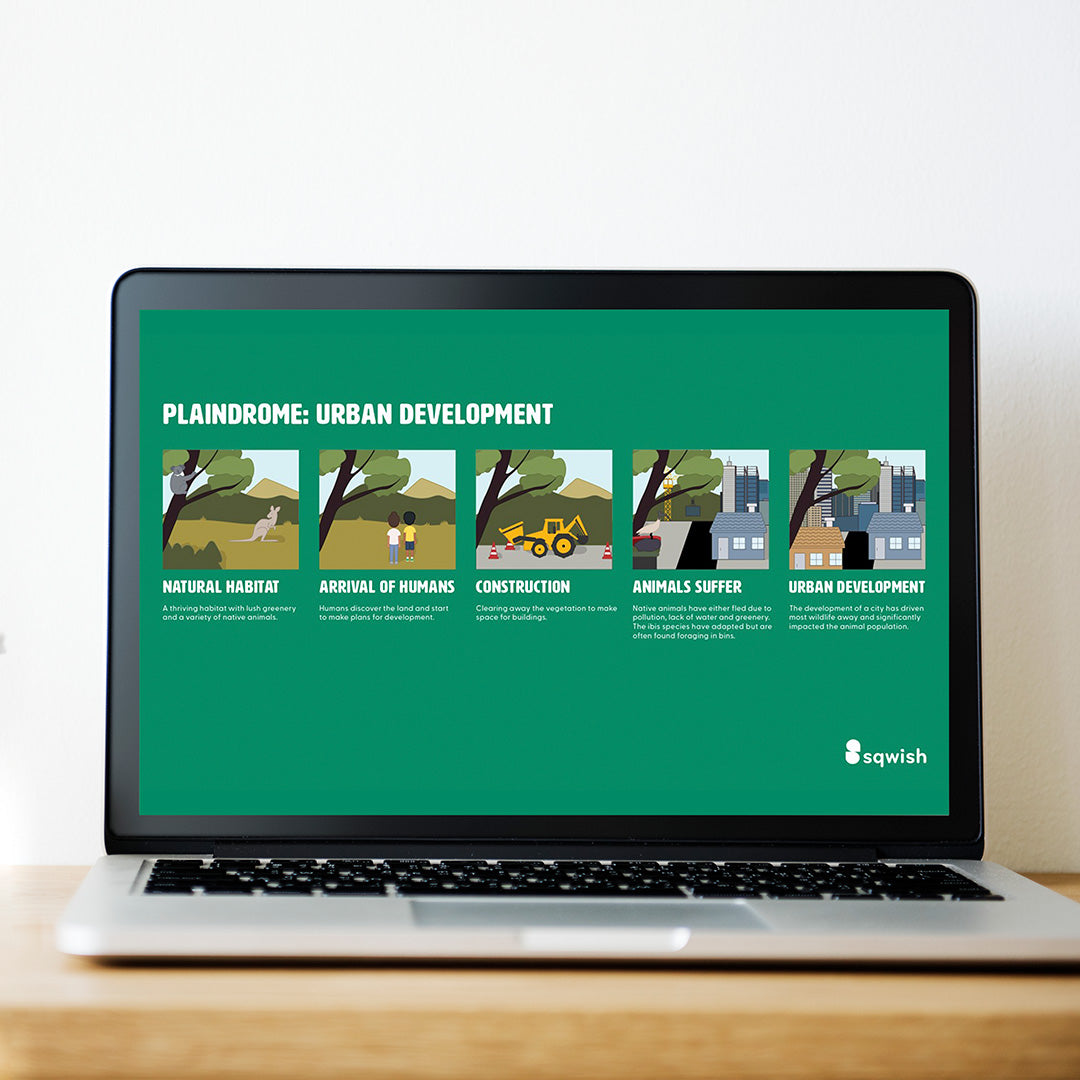Year 6 – Picture Palindrome (Visual Literacy & Biological Science)
Year 6 – Picture Palindrome (Visual Literacy & Biological Science)
AC9E6LA07 & AC9S6U01
Palindromes are known in words and poetry to read both forwards and backwards, so what is we gave our Year 6s a set of 5 images and asked them to arrange the images in a way that made sense to them? Then, what if we blew their minds with the fact that *the same* images could create a completely different meaning read the opposite way. A palindrome poem – with pictures!
And of course, why not use this opportunity for some cross learning and tie it to the Year 6 Biological Science descriptor? We have crated the same set of images to communicate either the destruction or rehabilitation of a natural habitat – depending how they are arranged.
You can bet your sweet bippy that this lesson ticks off two ACARA descriptors at once!
WHAT’S INCLUDED
WHAT’S INCLUDED
- Lesson Plan (1 easy A4 pager, wham-bam-thank-you-maam).
- 9 x Teaching Slides gauranteed to hook students.
- 5 x original Illustrations carefully crafted to depict a different story when arranges in a particular way.
- 2 x Storyboard Templates.
DETAILS
DETAILS
Year Level: 6
KLA & Sub-strand: English – Language (visual literacy)
Science – Biological Sciences (habitats)
File Format: Zip file – PDFs & PPT
CURRICULUM ALIGNMENT
CURRICULUM ALIGNMENT
Content Descriptors
- AC9E6LA07 (identify and explain how images, figures, tables,
diagrams, maps, and graphs contribute to meaning) - AC9S6U01 (investigate the physical conditions of a habitat and analyse how the growth and survival of living things is
affected by changing physical conditions)
Achievement Standards
- Students interact with others, and listen to and create spoken and/or multimodal texts including literary texts.
- For particular purposes and audiences, students share, develop, explain and elaborate on ideas from topics or texts.
- Students use and vary language features including topic-specific vocabulary and literary devices, and/or multimodal features and features of voice.
- Students read, view, and comprehend different texts created to inform, influence and/or engage audiences.
- Students identify similarities and differences in how ideas are presented and developed including through characters, settings and/or events, and how texts reflect contexts.
- Students explain how language features including literary devices, and visual features influence audiences.
- Students create written and/or multimodal texts including literary texts, for particular purposes and audiences, developing, explaining and elaborating on relevant ideas from topics or texts.
- Students use and vary language features including sentence structures, topic-specific vocabulary, and literary devices, and/or multimodal features.
- Students explain how changes in physical conditions affect living things.
DISCLAIMERS
DISCLAIMERS
By downloading you agree to
- Store downloads on a personal drive (not shared storage).
- Use for personal use and not benefit financially.
We get it, you love this lesson, you can’t wait to tell the teacher next door about it. But hey, just wait a sec! Two seasoned teachers poured their hearts into crafting this lesson, complete with some seriously spectacular resources. Instead of slipping it to the teacher next door, spread the love and share our page with them instead. It would mean the world to us.
